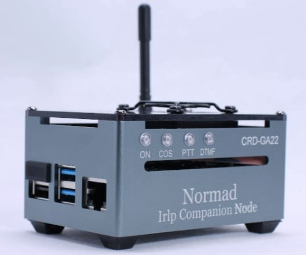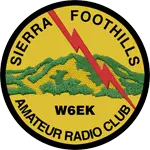I recently upgraded my PiRLP node to a NORMAD node.
The PiRLP node provided EchoIRLP capability. With the node, I was able to use IRLP and Echolink. The PiRLP interfaced directly to my Kenwood TM-D710. I have been using the nodes from David Cameron, VE7LTD, for a number of years with only very small problems now and again.
Once I got my Davis Vantage Pro2 weather station up on APRS via the same TM-D710, I started experiencing problems with the audio output level of the PiRLP node. The big problem was that if I wanted to use the TM-D710 to get on the local repeater, I had to shut down the PiRLP node first. Not ideal.
Enter the NORMAD IRLP node. I first heard about the node on Jeff’s blog at KE9V.net. Like my node for Wires/Fusion, the NORMAD IRLP node has a small transceiver built into it. This is a great solution. It provides me the ability to dedicate my TM-D710 for weather APRS as well as also using it to monitor the local repeater without making any changes here in the hamshack.
The primary purpose of this blog is to act as a station notebook. A log that serves as a record as to what I am doing in the shack, how I configured certain items, how I overcame obstacles that were in front of me. Admittedly I have done a poor job at keeping up. And sometimes I do not realize or remember what I have placed in the log so it could assist me in the future.
My configuration of the Normad for Echolink operations (in addition to its native IRLP ability) is a great example. I wished I had looked here first – it would have saved me about two hours. I received the Normad and swapped it out with my older PiIRLP. Got on to IRLP immediately. NOTE: here two great troubleshooting commands for trying to get Echolink working; killall tbd and tbd -ddd. The results provided by tbd -ddd show if your callsign and password are valid for the Echolink connection. A key place to start when Echolink is not working correctly.
I also enjoy using the Echolink functionality of EchoIRLP – mainly to listen to the Coffee Break net hosted by W6EK, the Sierra Foothills ARC every morning from 7:30am to 10am (Pacific).
If you are lucky, you have been involved in a truly great net at one point in your radio amateur career. The most memorable net for me was a 2m morning commute net back in Hampton Roads, Virginia. The participants were smart, well spoken, and directed the conversation to a number of topics which almost always focused on some aspect of amateur radio. In classic roundtable fashion, the conversation moved cleanly between those that checked in which allowed the focus to be on the conversation. Mark, N1LO, was one of the ringleaders. I miss those guys.
The Coffee Break Net is very similar. Check it out if you can. While the net does run on their terrestrial repeater (145.430 MHz -0.6 Offset PL Tone 162.2), you can join via AllStar (51018), Wires-X (W6EK-2M-ROOM (62545)), or Echolink (4128).



